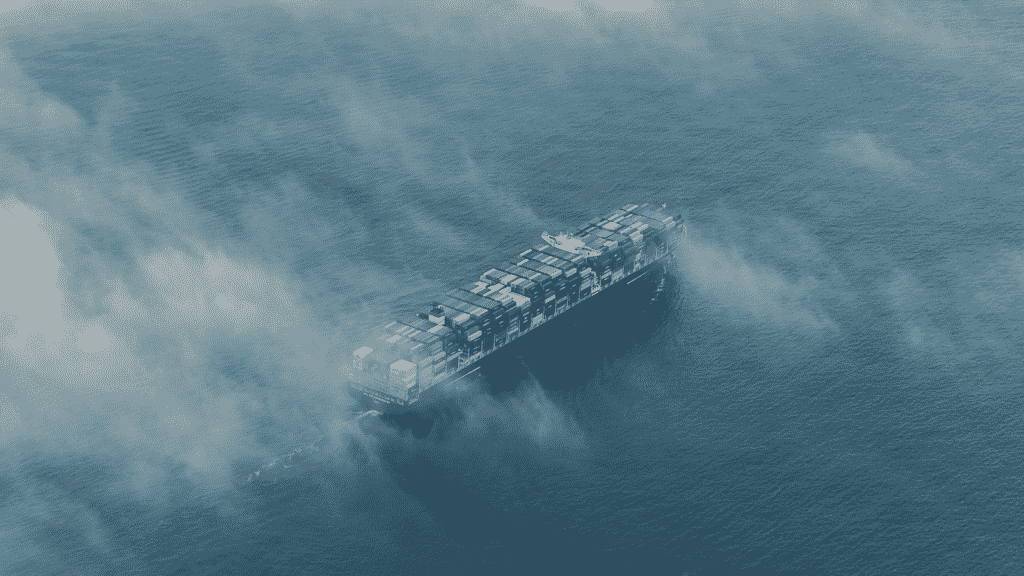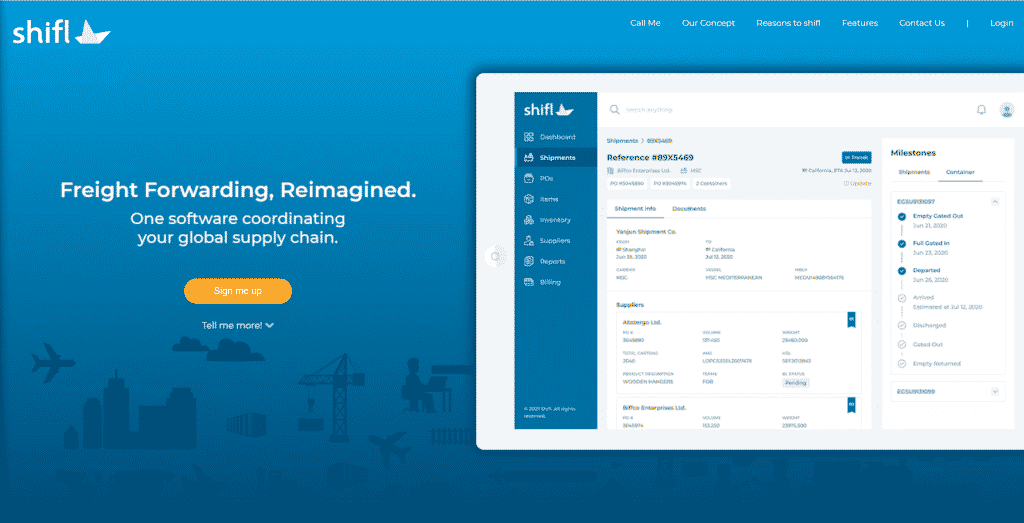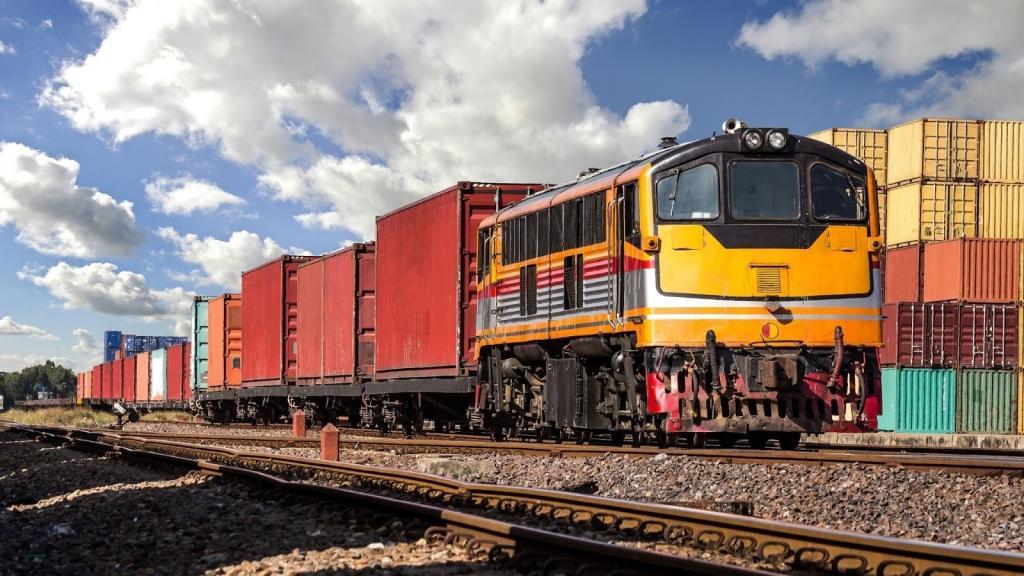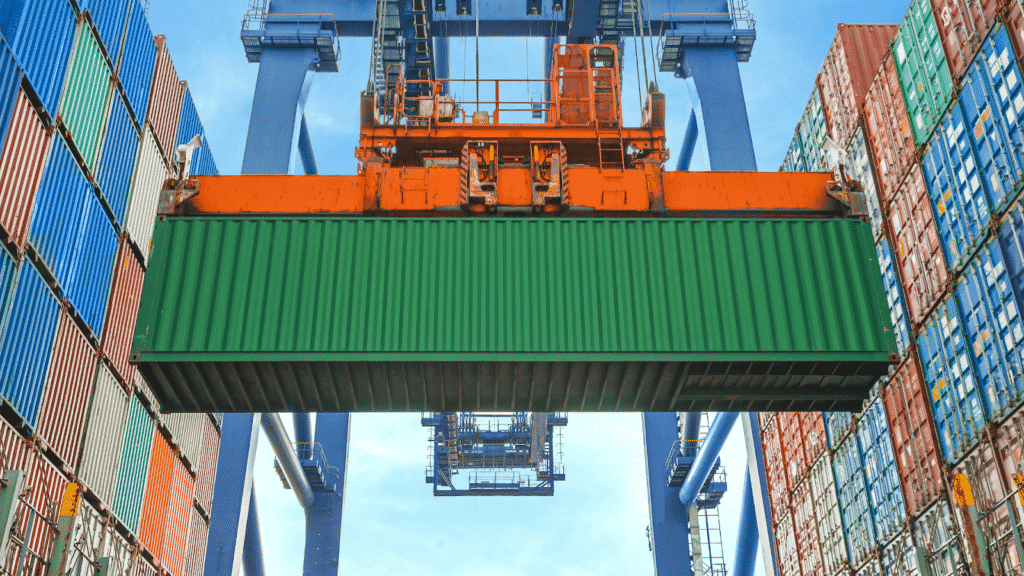Transporting goods across the globe can be incredibly complicated. That’s why freight shipping – done well – can feel a lot like magic.
But behind the magic, talented professionals are working around the clock to make modern business – and modern life – possible. Shabsie Levy, Founder & CEO of Shifl, is one such individual. He runs Shifl, a company that specializes in freight forwarding.
We thought of some questions you may have about how freight forwarding works. On a cold and rainy Tuesday morning, we called Shabsie and asked him to explain how it all goes down.
What follows is a transcript of our conversation. It has been edited for clarity and brevity.
How did you get started in freight shipping?
That’s a great question!
About 12 years ago, I started working for a large New York-based forwarding company at an entry level position.
I worked for that company for a decade. By the time I ended that job I was managing the freight forwarding department.
It was quite a ride in that company, and I got to learn the many “ins and outs” of the industry. I also saw very clearly how the entire industry could be re-imagined to work far more efficiently and on par with other industries in today’s cloud age.
What is freight shipping, and how is that different from order fulfillment?
Freight forwarders are like travel agents for international cargo.
There are many different processes and parties involved with shipping freight which make it far more complicated than standard travel.
With consumer travel, you’ve got a flight, hotel, and car. But with cargo there’s the factory and other parties involved, as well as various governmental agencies at origin and destination.
Then you’ve got the ocean carrier, airline, trucking, and warehousing at origin and destination.
Like you see, it’s a seriously complex process with many moving parts and potential for disaster and loss if not done right. We help people handle them effectively and at the best price – and to ensure it all gets to where it needs to go without incident or delay.
Are there different types of freight shipping based on what’s being shipped? Like small items vs. furniture – or are differences based on travel type, such as ground, air, or sea?
Anything arriving internationally comes by ocean. There are two ways that happens – either on a boat or by air.
Now, air is gonna be more expensive but quicker. Certain items tend to be shipped more often by air, like iphones. Apple can’t afford those products sitting on the water for a month.
However, shipping by ocean is the most cost-effective way to ship products. Most cargo comes in containers. Within the container, there are two modes – there’s FCL and LCL.
FCL (full container load) is where the customer fills up an entire container. A 20, 40, 40 High cube, 45 – these are the basic containers out of most countries. That container can be filled up by the customer from one or more suppliers.
On the other hand, let’s say the customer has only 10 cubic meters to ship – that’s going to go in a consolidated LCL container. We as the freight forwarder will combine multiple sets of cargo into one container. That can get a bit complex when it comes to customs and the way it’s handled.

If someone were to Google “freight shipping”, FedEx and DHL come up. Is that an accurate representation of the freight shipping industry?
It’s the most common and what people are aware of, but those are typically only last mile. They typically deliver small parcel packages. However, UPS, DHL, FedEx – those companies ship internationally.
Generally, if someone is going to be shipping just a sample from overseas, they’ll use a company like DHL. That may be the best way of doing it because they’ve got trucks all over. So when it comes to small parcels, these companies are usually the best option.
Most international shipping happens outside of UPS and DHL etc. Most bulk cargo coming international is outside of their role.
Fulfillment centers are often located in centralized hubs. Is this true for freight shipping as well?
Yes! Those hubs would be the container ports. There are certain terminals in every port – New York and New Jersey have about five to six terminals – and that’s where all the containers come in.
Generally, when it comes to less-than truckload shipping, you have container freight stations (CFS) where containers are split up and each customer is able to have their products picked up.
So terminals and airports are like fulfillment hubs for freight. They are where all the cargo comes in.

Generally speaking, who do you consider to be your client?
Any company manufacturing product overseas, or manufacturing products locally to export them internationally.
How do you decide which freight companies show up on SHIFL?
We shop around between all the carriers, so our customers have the ability to get the best pricing available with the ocean carriers at that time.
There are about 14 ocean carriers shipping out of China to the USA.
When a customer ships with us, they’ll get the best scheduling options according to their cargo-ready date and according to freight availability. Then they’ll get the best pricing, based on whether they are ok with longer transit or if they need it here quickly.
What is the most interesting item that you’ve ever had a hand in transporting?
I would say the tons of PPE, personal protective equipment, we shipped during Covid.
Right at the beginning, we were bringing in lots of emergency cargo. We did entire truckloads by air of masks and gowns that came from overseas.
Then we did a tremendous amount of other items like thermometers, wipes, gloves, sanitizers, etc. I’d say that those experiences were interesting.
What’s the most complicated shipping route (that you wouldn’t expect)?
Generally, shipping can get complicated. Certain ports in China don’t go directly to, let’s say, New York, so they’ll be transshipping in different ports.
Those get a little bit complicated. Like when a customer would expect arrival here in 35 days and they delay one or two weeks at the transship ports, especially during the pandemic.
When it comes to complicated shipping…
Let’s say a customer has a container of goods and they need it in New York very quickly, but the fastest way to get it there would be on a vessel that takes 25 days. We can get a little creative here.
We could take a fast boat to Los Angeles, which would take 11 days. Then we would transload it into a 53-footer and team truck it to New York (two drivers that alternate so the truck is constantly on the move). Doing this, we can get goods to New York from Shanghai in 16 days. That’s creativity that saves time!

What is one aspect of the freight shipping process that would surprise our readers?
People see the movement of cargo and they expect – with current tech – that everything is streamlined. However, it’s not.
It’s broken up in pieces: No integration, data being reentered multiple times, and lack of visibility.
If our readers were to walk away from this article with one piece of advice, what would it be?
Anybody that needs a freight forwarder must do their due diligence and research to make sure they’re working with the right company.
There are many regulations involved when it comes to shipping where people can get stuck.
Pricing is very, very volatile. It’s not like you’re gonna buy a loaf of bread in the store where you know the price. You don’t know at any given point of time if you’re paying a high price or a low price based on the market.
Also, try to find a company that is forward-thinking, and not one that’s stuck in old ways of doing things.
That’s good advice. Any particular names come to mind?
Yes, I’ve got one! It’s called SHIFL, and we’ll take incredible care of you and your cargo.

Shabsie Levy is Founder & CEO of SHIFL. Learn more about how you can streamline freight shipping with one software to coordinate your global supply chain.
You’ve done everything by the book. Your Kickstarter campaign is almost ready to launch.
You made a great product. Built an audience. Set up a campaign page.
But how do you ship it?
We put this checklist together to help you get started. It's free.





